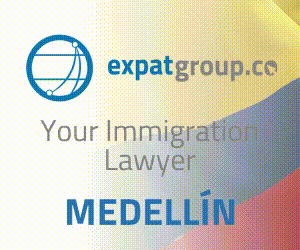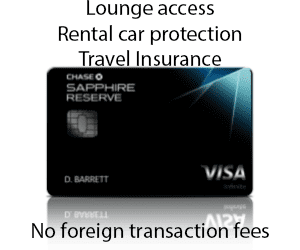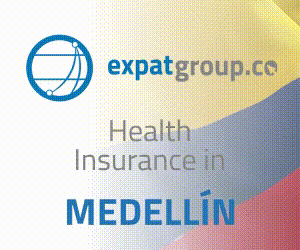In Colombia, Proactive Steps Must Be Taken to Shield the Family Home from Legal Action
In Colombia, prospective homeowners must navigate existing legal frameworks to protect residential assets from judicial proceedings such as embargoes and liens. The relevance of these protective measures is underscored by data from the Dirección de Impuestos y Aduanas Nacionales (DIAN), which recorded 14,248 property embargoes across the country in 2024.
According to analysis of Colombian law, two principal legal mechanisms, as detailed by the real estate firm Metrocuadrado, are available to shield property: the Family Home Designation (Afectación a Vivienda Familiar) and the Inembargable Family Estate (Patrimonio de Familia Inembargable). The applicability and requirements for each mechanism vary based on the marital status of the owners and the presence of minor children.
The Family Home Designation (Afectación a Vivienda Familiar)
Established by Law 258 of 1996, the Family Home Designation legally safeguards a property intended for the primary family residence. Its primary function is to prevent the asset from being embargoed, sold, or encumbered without the express, mutual consent of both spouses or permanent partners. This figure is particularly relevant when the family unit includes minors.
The designation prevents either spouse or partner from disposing of the asset unilaterally, thus protecting the investment made by both parties.
Requirements and Procedure
The constitution of the Family Home Designation is subject to strict legal stipulations:
- Property Type: It applies exclusively to residential properties. Commercial spaces, farms, or parking garages are ineligible.
- Ownership Status: It is only available to owners who are legally married or have established a formal permanent union for a minimum of two years. Single individuals cannot utilize this mechanism.
- Title: The parties requesting the designation must be listed as the sole owners of the property.
- Limitation: The designation can be applied to only one property per family unit.
To formalize the protection, both spouses must appear before a notary public, presenting documentation that typically includes: a current Property Tax Clearance Certificate (Paz y Salvo del Impuesto Predial), the Certificate of Freedom and Tradition (Certificado de Libertad y Tradición), the civil registry records for any minors, and a certificate from the Instituto de Desarrollo Urbano (IDU) (for Bogotá properties), in addition to the identity documents of the owners.
The associated costs at the notary typically range between $300,000 COP and $600,000 COP. Additionally, the registration fee for 2025 is $28,100 COP, and the inscription on the property’s registration folio costs $14,600 COP. For the protection to hold legal effect, a copy of the public deed must be formally registered with the Oficina de Registro de Instrumentos Públicos (ORIP) in the location where the property is registered.
The Inembargable Family Estate (Patrimonio de Familia Inembargable)
Regulated by Law 70 of 1931, the Inembargable Family Estate establishes economic and legal protection for family assets, rendering them generally inembargable, with the notable exception of fiscal or tax-related proceedings.
A key limitation of this figure is that the protected property’s value cannot exceed the equivalent of 250 current legal monthly minimum wages (SMMLV) at the time of constitution. This mechanism is more inclusive regarding beneficiaries, extending protection to:
- Spouses/partners with minor children.
- Couples without minor children.
- Single individuals.
The estate can also be constituted through donation or testament. For properties categorized as Social Interest Housing (Vivienda de Interés Social or VIS), the constitution of this family estate is mandatory and is typically integrated into the property’s deed of sale.
Procedure and Effects
To constitute the estate, a written request must be submitted to a notary, specifying the applicant’s name, marital status, and the beneficiaries. Required documents include: the Certificate of Freedom and Tradition for the property, a marriage certificate (if applicable), civil registry records for children (if applicable), and the cadastral appraisal or property tax receipt.
Following the request, the notary posts a public notice for 15 days, allowing any interested third parties to present objections. Subsequently, the public deed is signed and must be submitted to the Oficina de Registro de Instrumentos Públicos (ORIP) for inscription. The notary fees for this process are comparable to the Family Home Designation, typically ranging from $300,000 COP to $600,000 COP, excluding document and registration costs.
The protection becomes legally enforceable immediately upon registration. Crucially, this mechanism cannot be established over properties that are already mortgaged, except in the case of VIS properties, which are protected at the point of purchase. Furthermore, the act of renting out the asset may provide grounds for a judge to petition for the protection to be lifted.
Comparative Differences
The distinction between the two figures rests on criteria related to eligibility, property value, and scope of protection:
| Feature | Family Home Designation (Afectación a Vivienda Familiar) | Inembargable Family Estate (Patrimonio de Familia Inembargable) |
|---|---|---|
| Eligibility | Restricted to legally married couples or permanent partners. | Open to married couples, permanent partners, and single individuals. |
| Property Value Limit | No statutory value limit. | Cannot exceed the equivalent of 250 legal monthly minimum wages (SMMLV). |
| Primary Protection | Shields against sale or encumbrance without the consent of both spouses/partners. | Renders the asset generally inembargable (except for fiscal obligations). |
| Transaction Effort | Requires both spouses’ consent for the sale or lien. | Requires judicial or notarial steps to sell or mortgage the asset, making the process more involved. |




























